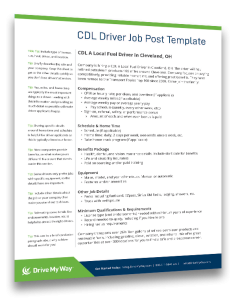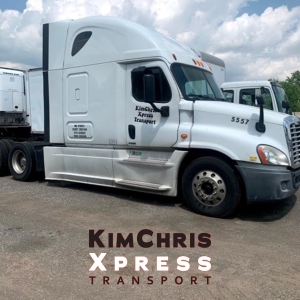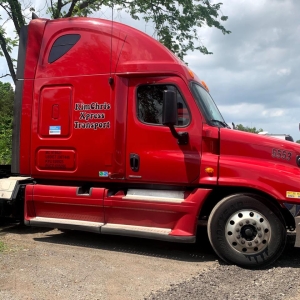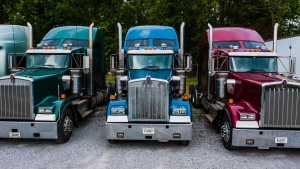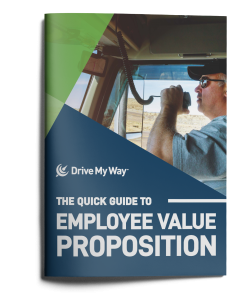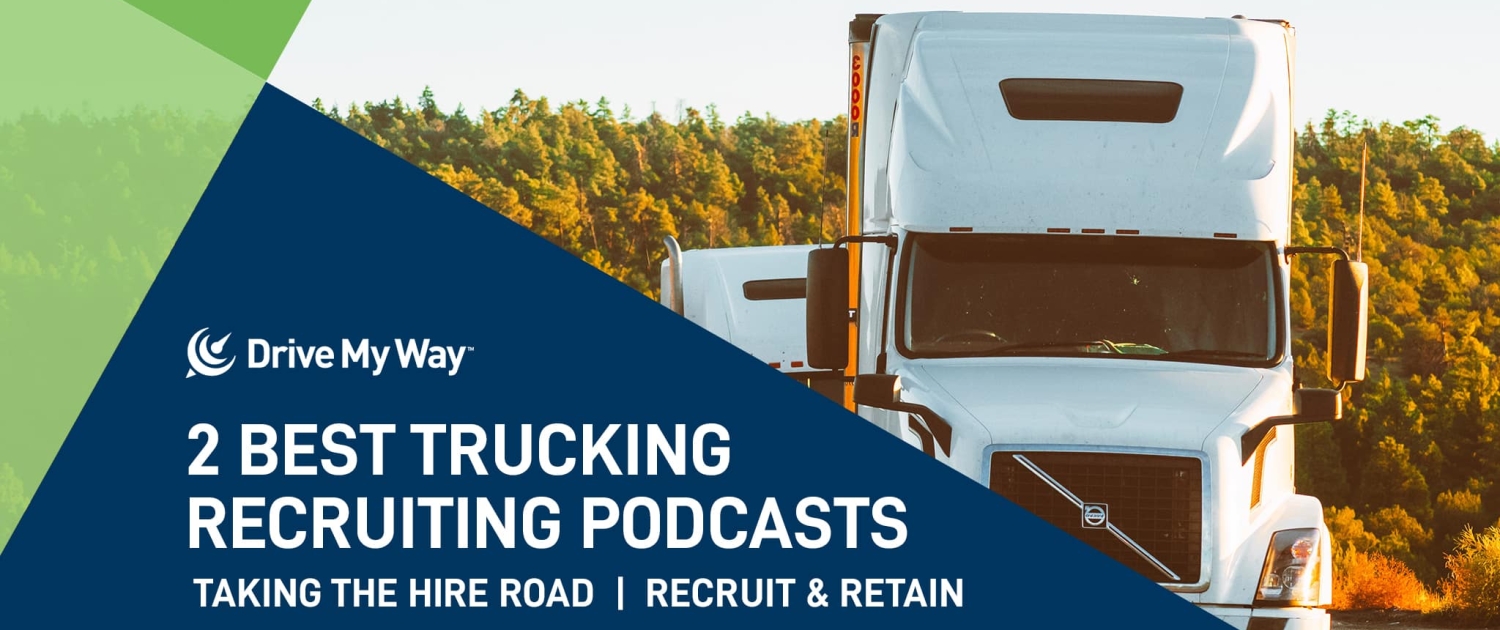
If you’ve been in the driver recruiter space long enough, you probably know about Recruit & Retain: Trucking Edition with Chad Hendricks and Taking the Hire Road with Jeremy Reymer. Both podcasts focus on the challenges of recruiting and retention in the trucking industry. The recruitment podcasts also feature a number of industry experts who share their knowledge with listeners.
We had the chance to talk to both Chad and Jeremy about how they started their podcasts, what their favorite episodes have been so far, and what topics they’re excited to tackle this year.
How Did You Start Your Podcast?

Jeremy Reymer, host of Taking the Hire Road
Jeremy: “Years ago, I had the thought of doing a podcast on my own. I loved the idea but felt that it wouldn’t be a good fit at the time. I wanted to do it, but just didn’t have the time.
Fast forward a few years and FreightWaves reached out and pitched the idea of me hosting my own podcast with the help of their audio and content team. It was the perfect situation. I would be able to pick my own guests and host, while the FreightWaves team would handle all the production and promotion. I agreed and now here we are, 44 episodes later.
As for the name of the podcast, it came from my belief that it’s important to surround yourself with people who do the right thing and who take the higher road. The play on words with higher and hire was the perfect fit.”

Chad Hendricks, host of Recruit & Retain: Trucking Edition
Chad: “We had a client in the building industry who was looking for ways to be known as an industry leader in his space. He asked us what we recommended, and we pitched him the idea of starting his own podcast. He wasn’t a fan of the idea, but it got us thinking about doing a podcast ourselves.
Starting out, we thought it might be difficult to get guests on the podcast, but that wasn’t the case at all. It’s really surprising how many people were interested in being on it, especially our clients. That’s the origin of Recruit & Retain, and we’re still here, going on our third year.”
What Topics are you Excited About Tackling on the Show this Year?
Jeremy: “From a company perspective, recruiting and retention are the two number one issues that they’re facing right now. For drivers, their biggest grievances are things like parking and pay. If a carrier is able to solve those driver problems, they’ll be working towards solving their recruiting and retention problems. My main goal is trying to find more material that addresses those issues.
I also want to put a focus on more compliance talk to dispel certain misinformation out there. For example, so many times recruiters think, ‘I need to get 10 years of employment verification’ and that’s just not true at all. You may have a company policy that says that, which is different. Dispelling some of those common misconceptions and informing recruiters is a big focus this year.”
Chad: “The biggest one I’m excited to dive into is helping recruiters find where they can differentiate from competitors. Most are trying to wordsmith their pay package in the job advertisement, but drivers and getting keen to it. You can’t have a job ad that just talks about cents per mile with the picture of the guy with his arms folded. Drivers have seen that 1,000 times. You need something to get their eyeballs to stop for a second on your ad.
The second piece to differentiation is figuring out how to create a positive driver experience once drivers come on board. It only takes a week for a driver to decide how they feel about working for a certain carrier. You want your new drivers to say, ‘I’ve never been treated this well in my first week at a new job.’ I’m really looking forward to bringing on some guests who can speak on this topic.”
What has Been Your Favorite Episode of the Show so Far?
Jeremy: “I really enjoy talking with Rebecca Brewster, President & COO of the American Transportation Research Institute. We have a good natural rapport that always leads to a great interview. I would also say any episode that features Leah Shaver is great too. She has such a great personality and is so knowledgeable about our industry. Every time she’s on, I know that listeners are going to come away with something they didn’t know before.”
Chad: “I don’t know if I have one specific favorite episode, but I’ve really enjoyed when I’ve been able to be very transparent with the audience and talk about our internal processes and how we operationalize our values. What I mean is that if a company says, ‘these are our values,’ then how are they actually living those out? In those episodes, we lay out exactly how to do this at Brand Outcomes, with concrete examples that carriers can implement right now into their own businesses.”
Jeremy Reymer is the founder and CEO of DriverReach. You can find new episodes of Taking the Hire Road every week on Apple Podcasts, Spotify, Stitcher, and YouTube.
Chad Hendricks is the President of Brand Outcomes, Inc. You can find new episodes of Recruit & Retain: Trucking Edition every week on Apple Podcasts, Spotify, Stitcher, and YouTube.







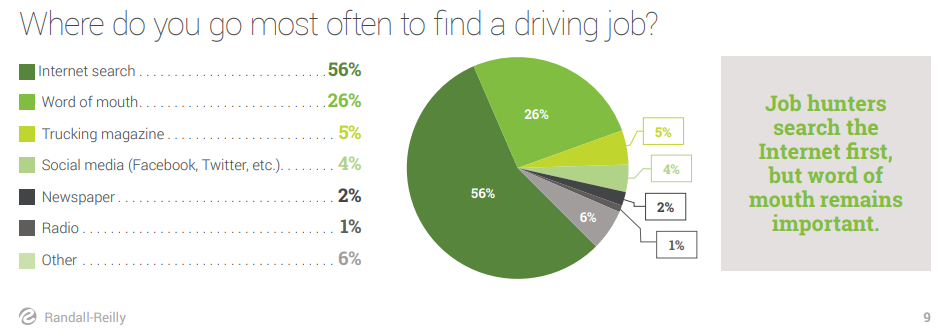

 No matter how great your referral program is, drivers won’t participate if they don’t believe what they’re selling. Talk to your current drivers about what they enjoy most about your company, and what would make it better. More PTO, home time, and performance-based bonuses are common answers. Showing that the company is making an active effort to improve the
No matter how great your referral program is, drivers won’t participate if they don’t believe what they’re selling. Talk to your current drivers about what they enjoy most about your company, and what would make it better. More PTO, home time, and performance-based bonuses are common answers. Showing that the company is making an active effort to improve the 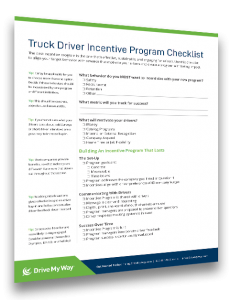

 With thousands of carriers advertising jobs for truck drivers right now, how do you make sure yours resonates? If you’re recruiting for a smaller carrier, this can be even harder, since you may still be developing brand recognition. That’s not to say that creating a great job advertisement is an impossible task. It can seem daunting, but there are a few simple tips you can use to make sure your ads are getting noticed by the drivers you’re looking for.
With thousands of carriers advertising jobs for truck drivers right now, how do you make sure yours resonates? If you’re recruiting for a smaller carrier, this can be even harder, since you may still be developing brand recognition. That’s not to say that creating a great job advertisement is an impossible task. It can seem daunting, but there are a few simple tips you can use to make sure your ads are getting noticed by the drivers you’re looking for. 